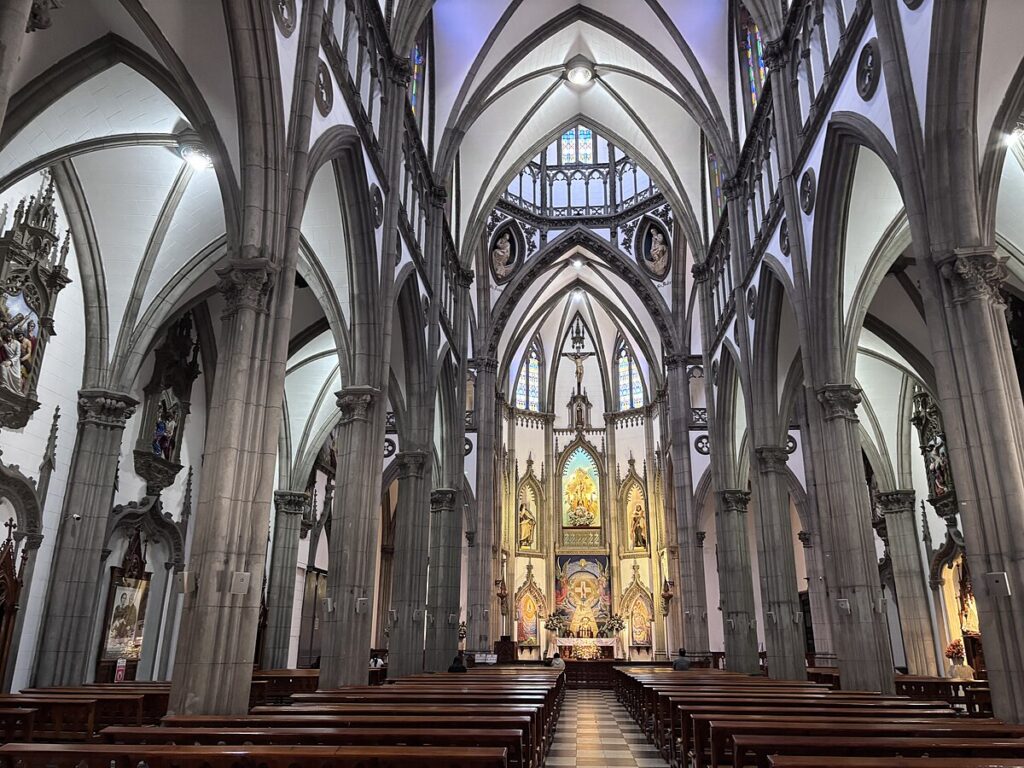La Iglesia de Santa Teresita, ubicada en el centro norte de Quito, es uno de los ejemplos más representativos de la arquitectura republicana del siglo XX en la ciudad. Su construcción comenzó en 1938 y fue impulsada por la comunidad de las Carmelitas Descalzas. Se caracteriza por un estilo neogótico republicano, que retoma elementos de la tradición medieval europea, pero adaptados al contexto urbano moderno de Quito.
Entre sus elementos arquitectónicos destacan las altas torres puntiagudas, los arcos ojivales, vitrales policromados y contrafuertes que evocan el estilo gótico francés. La nave central, amplia y luminosa, está acompañada por vitrales importados de Francia, que narran escenas de la vida de Santa Teresita del Niño Jesús. El uso de la piedra tallada en su fachada refuerza su monumentalidad y la integra al paisaje quiteño.
En cuanto a su contexto histórico, la iglesia surge en un momento en que Quito buscaba modernizar su imagen urbana durante la República, incorporando estilos arquitectónicos europeos como muestra de progreso y devoción. La Santa Teresita no solo es un referente religioso, sino también cultural y patrimonial, pues simboliza la influencia del neogótico republicano en la capital ecuatoriana, marcando un puente entre la tradición colonial y la modernidad del siglo XX.
The Church of Santa Teresita, located in the north-central part of Quito, is one of the most representative examples of 20th-century republican architecture in the city. Construction began in 1938 and was driven by the Discalced Carmelite nuns. It is characterized by a Republican neo-Gothic style, which draws on elements of medieval European tradition but adapts to Quito’s modern urban context.
Its architectural elements include tall pointed towers, pointed arches, polychrome stained-glass windows, and buttresses reminiscent of the French Gothic style. The spacious and bright central nave is accompanied by stained-glass windows imported from France, depicting scenes from the life of Saint Therese of the Child Jesus. The use of carved stone on its façade reinforces its monumentality and integrates it into the Quito landscape.
Regarding its historical context, the church emerged at a time when Quito sought to modernize its urban image during the Republic, incorporating European architectural styles as a sign of progress and devotion. The Santa Teresita Church is not only a religious landmark, but also a cultural and heritage landmark, symbolizing the influence of the Republican neo-Gothic style in the Ecuadorian capital, marking a bridge between colonial tradition and 20th-century modernity.

Mira la historia detrás de estas bellas artes que tiene esta obra actual de Quito.